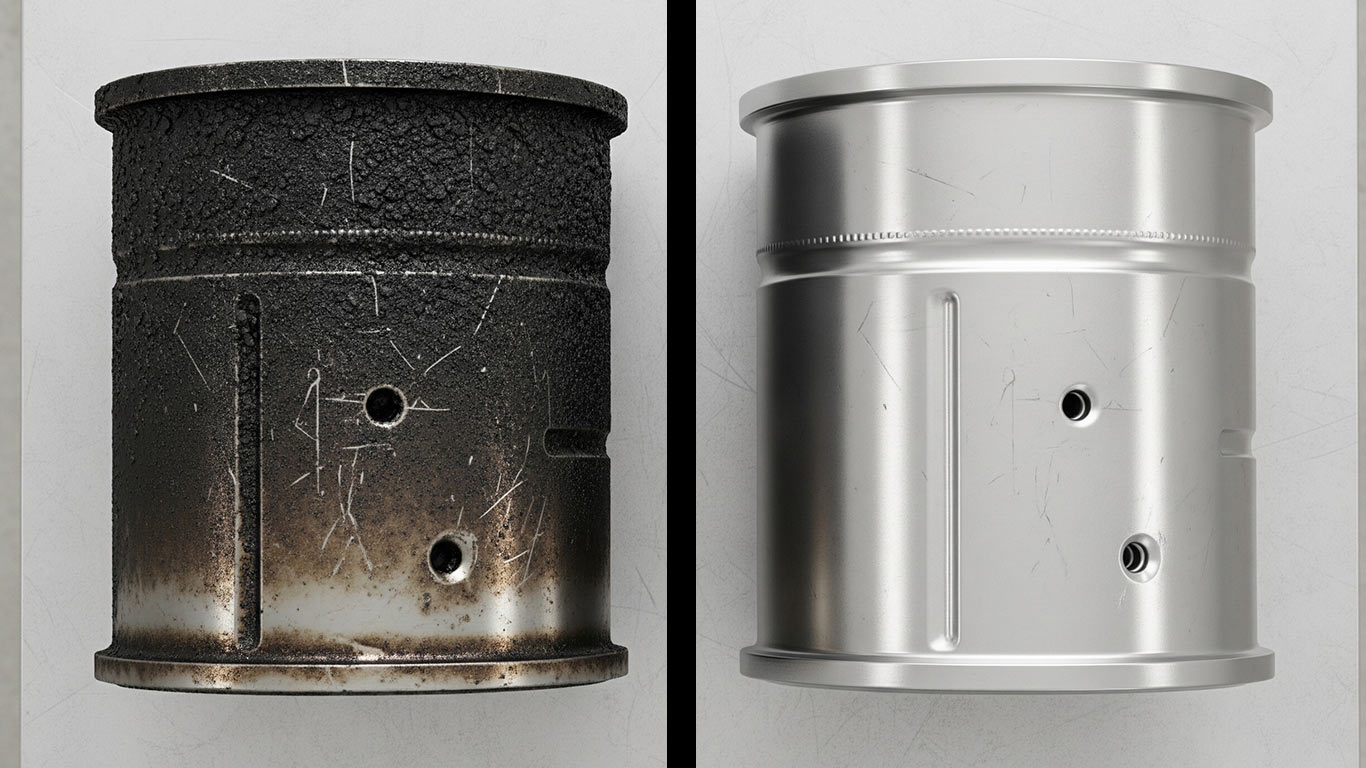
Hastelloy Laser Cleaning
Precision Laser Cleaning Preserves Hastelloy's Corrosion-Resistant Integrity

Properties: Hastelloy vs. other metals
Laser-Material Interaction
Material Characteristics
Other Properties
Machine Settings: Hastelloy vs. other metals
Hastelloy surface magnification
Laser cleaning parameters for Hastelloy
Before Treatment
Under microscopic scrutiny, the Hastelloy surface displays heavy contamination with clustered particulates—oily residues and metallic debris—ranging 10-100 microns, embedding into the nickel alloy matrix. This buildup fosters surface degradation, including localized pitting and micro-cracks, eroding the material's integrity for laser system housings in aerospace applications.
After Treatment
After cleaning Hastelloy surfaces in laser systems, restoration delivers a smooth, contaminant-free condition. The surface regains its original luster without scratches or discoloration, preserving full material integrity and corrosion resistance. This high-quality outcome supports reliable performance in optical housings, as seen in applications at Lawrence Livermore National Laboratory.
Hastelloy Laser Cleaning FAQs
What are the optimal laser parameters (wavelength, power, pulse duration) for cleaning oxides and contaminants from Hastelloy C-276 without causing micro-cracking or elemental depletion?
Can laser cleaning induce sensitization in Hastelloy by precipitating carbides at grain boundaries, and how can this be prevented?
Is laser cleaning effective for removing stubborn heat tint and oxide scale from welded Hastelloy joints without thinning the base metal?
What specific safety hazards are posed by the fumes generated during laser cleaning of Hastelloy, particularly concerning nickel and molybdenum?
How does the surface roughness (Ra) of Hastelloy change after laser cleaning, and does it affect performance in high-purity or corrosive service?
After laser cleaning, is passivation of Hastelloy still required to restore the protective chromium oxide layer?
What is the risk of galvanic corrosion when laser cleaning a Hastelloy component that is assembled with other metals like carbon steel or stainless steel?
Why is Hastelloy often considered more challenging to clean with lasers compared to standard stainless steels like 304 or 316?
Can laser cleaning be used to selectively remove a coating or contamination from a Hastelloy part without damaging the underlying substrate?
What non-destructive testing (NDT) methods are recommended to inspect Hastelloy for subsurface damage after an aggressive laser cleaning process?
Regulatory Standards & Compliance

FDA
FDA 21 CFR 1040.10 - Laser Product Performance Standards

ANSI
ANSI Z136.1 - Safe Use of Lasers

IEC
IEC 60825 - Safety of Laser Products

OSHA
OSHA 29 CFR 1926.95 - Personal Protective Equipment







